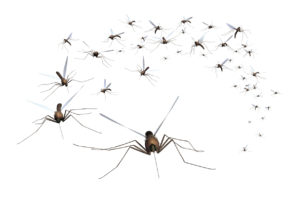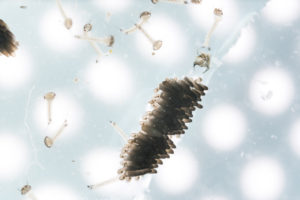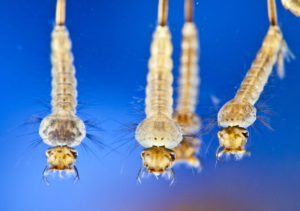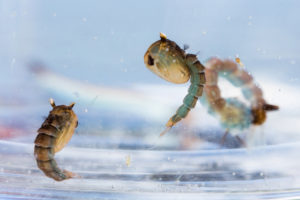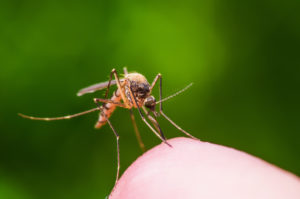The Mosquito Life Cycle
There are more than 3,000 species of mosquitoes in the world, and they fall into 39 genres. However, the two most common mosquitos in the U.S are the Culex spp.(house fly) and the Aedes spp.(the yellow fever mosquito). Identified as invertebrates, these pests grow up to 0.125-.75 inches long, and on average weigh .000088 ounces. Additionally, the lifespan for females averages 42-56 days and for males 10 days. As mosquitos do not travel more than a mile from where they are hatched and that their sole purpose is to lay more eggs, finding one of the life cycle stages of a mosquito is a high indication they are within your vicinity.
Regardless of the type of species in your area, every mosquito will undergo the same general life cycle; 4 stages of full development. As these stages are easily distinguished by their special appearance, we will be providing information on each stage to help you identify where in the life cycle the mosquito is.
The Mosquito Egg
- Eggs are laid individually or deposited in clusters to form “rafts.” These eggs will then float on the surface of water or be laid on damp soil that will later be flooded by water.
- It is important to know that mosquito eggs need as little as 1 inch of standing water to hatch.
- Females can produce up to 500 eggs before dying. This is usually done at night in batches of 50-100, and can be laid roughly every 3
- Most mosquitos will hatch within 24-72 hours after being exposed to water, with some species withstanding winters before hatching.
The Mosquito Larva
- Known as “wigglers,” mosquito larva is what emerges after the egg hatches.
- The larva will typically live in the water and use the surface to breathe. Most larva have siphon tubes that they use to breathe, while those who do not will lie parallel to the water surface.
- Mosquito larva will feed on various materials such as bacteria, algae, or other organic material during this stage.
- Larva will molt 4 times before becoming pupa in the 4th
- Depending on species and weather, the time between larva to pupa is typically a few days.
The Mosquito Pupa
- This stage of the mosquito cycle is considered the “rest” stage, as the pupa does not feed or do much besides prepare for adulthood.
- The pupa, also known as “tumblers,” respond to light changes and will move (tumble) around the water with their tails.
- Pupa will stay near the surface of the water during the entirety of this stage.
- Mosquitos spend 2-7 days in the pupa stage before emerging as an adult.
The Mosquito Adult
- The adult mosquito will now emerge after the pupa stage, resting on the water’s surface while waiting for its wings and legs to strengthen and dry.
- After several days, males will leave the water to feed on nectar, while the females will seek out blood for reproduction.
- Females will then find a suitable place to lay eggs, and the mosquito life cycle will begin again.
Knowing and understanding what the life cycle of a mosquito is helps people to take preventative measures in reducing the mosquito population. Having the basic knowledge of what each stage needs to survive and knowing what they look like is key. From the egg stage to adulthood, understand these pests so you can remove them now.
Don’t wait for the mosquito population around your property to get out of hand. Contact the Bug Master today to receive help in eliminating these annoying pests!

